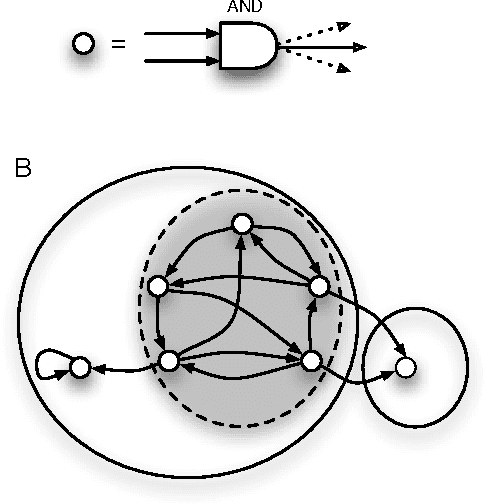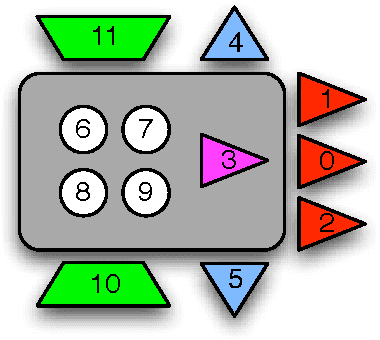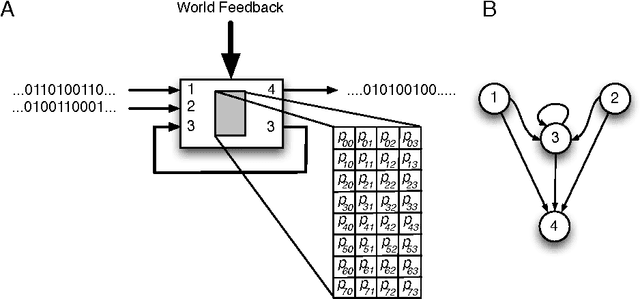Nicolas Chaumont
Evolution of sustained foraging in 3D environments with physics
Dec 21, 2011



Abstract:Artificially evolving foraging behavior in simulated legged animals has proved to be a notoriously difficult task. Here, we co-evolve the morphology and controller for virtual organisms in a three-dimensional physically realistic environment to produce goal-directed legged locomotion. We show that following and reaching multiple food sources can evolve de novo, by evaluating each organism on multiple food sources placed on a basic pattern that is gradually randomized across generations. We devised a strategy of evolutionary "staging", where the best organism from a set of evolutionary experiments using a particular fitness function is used to seed a new set, with a fitness function that is progressively altered to better challenge organisms as evolution improves them. We find that an organism's efficiency at reaching the first food source does not predict its ability at finding subsequent ones because foraging efficiency crucially depends on the position of the last food source reached, an effect illustrated by "foraging maps" that capture the organism's controller state, body position, and orientation. Our best evolved foragers are able to reach multiple food sources over 90% of the time on average, a behavior that is key to any biologically realistic simulation where a self-sustaining population has to survive by collecting food sources in three-dimensional, physical environments.
Integrated information increases with fitness in the evolution of animats
Oct 03, 2011



Abstract:One of the hallmarks of biological organisms is their ability to integrate disparate information sources to optimize their behavior in complex environments. How this capability can be quantified and related to the functional complexity of an organism remains a challenging problem, in particular since organismal functional complexity is not well-defined. We present here several candidate measures that quantify information and integration, and study their dependence on fitness as an artificial agent ("animat") evolves over thousands of generations to solve a navigation task in a simple, simulated environment. We compare the ability of these measures to predict high fitness with more conventional information-theoretic processing measures. As the animat adapts by increasing its "fit" to the world, information integration and processing increase commensurately along the evolutionary line of descent. We suggest that the correlation of fitness with information integration and with processing measures implies that high fitness requires both information processing as well as integration, but that information integration may be a better measure when the task requires memory. A correlation of measures of information integration (but also information processing) and fitness strongly suggests that these measures reflect the functional complexity of the animat, and that such measures can be used to quantify functional complexity even in the absence of fitness data.
* 27 pages, 8 figures, one supplementary figure. Three supplementary video files available on request. Version commensurate with published text in PLoS Comput. Biol
 Add to Chrome
Add to Chrome Add to Firefox
Add to Firefox Add to Edge
Add to Edge